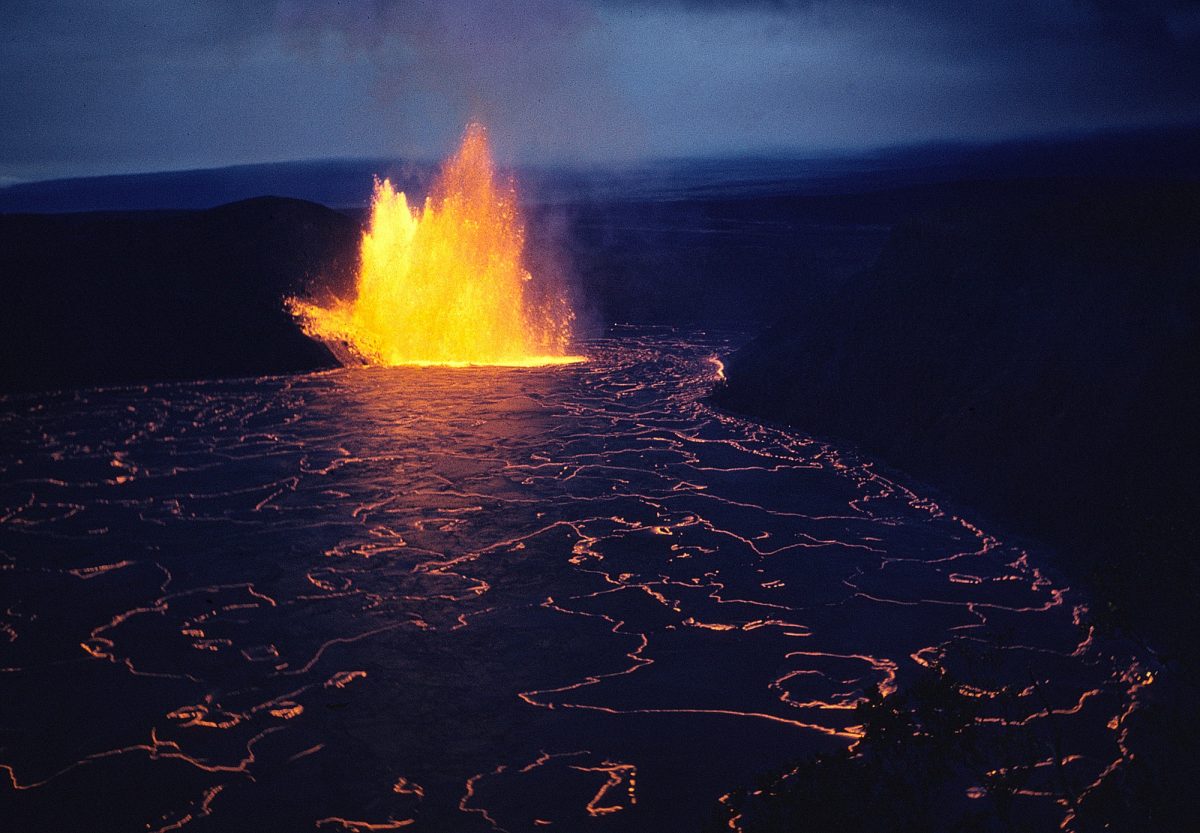
This, only much bigger. Image: Kīlauea Iki crater eruption on Dec. 5, 1959; credit: Wikimedia Commons
Culprit behind mass extinction identified, motive remains unknown
A team of scientists has found the mechanism that has triggered past extinction events
About 183 million years ago tremendous volcanic eruptions occurred and lava deposits rivalling the size of continents covered Earth’s surface, causing mass extinctions and changing the ocean’s chemistry and global climates. What triggered this has been a mystery for the past 183 million years, but a new paper published in Science Advances offers a compelling explanation.
One of the paper’s co-authors, Ricardo L. Silva, an Assistant Professor in Paleoenvironmental Sedimentology in the University of Manitoba’s Department of Earth Sciences, explains that what likely enabled this catastrophic series of events was a slowing of the tectonic plates. In short, the team found the long-sought mechanism that links Earth’s interior and surficial processes and came up with an explanation for one of Earth’s major past global climate and mass extinction events.
“Imagine you’re using a pressure washer on the side of your house, but then you stop moving the spout and spray water in one place,” Silva says. “Eventually, you’ll bore a hole through your house. Now make a magma plume from deep inside the Earth the pressure washer and tectonic plates your house. That’s what happened. And when the magma bore through the plates, vast amounts of carbon dioxide were released, and when the magma heated the surrounding rocks, even more carbon was released.”
These major volcanic events, called Large Igneous Provinces (LIPs), occur every 20 million years or so and the largest release enough carbon into the atmosphere to disrupt Earth’s climate, alter ecosystems, and cause mass extinctions. By examining ancient mudstone deposits from a 1.5 km-deep borehole in Wales, the team discovered that these catastrophic events directly coincided with the occurrence of major volcanic activity and associated greenhouse gas release on the southern hemisphere, in what is today southern Africa, Antarctica and Australia.
The crucial new bit of information came when the research team’s plate reconstruction models helped them discover the key fundamental geological process that seemed to control the timing and onset of this volcanic event and others of great magnitude: the slowing of the plates. (Why tectonic plates slow to such a degree to enable LIPs is not yet known.)
“Scientists have long thought that the onset of upwelling of molten volcanic rock, or magma, from deep in Earth’s interior, as mantle plumes, was the instigator of such volcanic activity but the new evidence shows that the normal rate of continental plate movement of several centimetres per year effectively prevents magma from penetrating Earth’s continental crust,” says lead author Micha Ruhl, an Assistant Professor in Trinity College Dublin, Ireland. “It seems it is only when the speed of continental plate movement slows down to near zero that magmas from mantle plumes can effectively make their way to the surface, causing major large igneous province volcanic eruptions and their associated climatic perturbations and mass extinctions.”
Such catastrophic environmental events in the Earth’s history are of great interest to Silva, who recently came to UM, and rounds out the expertise of the Basin, Environment, and straTigraphY (BETY) research group. Scientists are starting to recognize that these large volcanic episodes resulted in profound changes in the ocean’s ecosystems because of the expansion of coastal dead zones and ocean acidification, disrupting the biological flux of carbon between the atmosphere and the oceans. However, we still know very little about these processes, so we lack an understanding of how oceans and ocean productivity influence climate and the environment over various timescales. The BETY research group at UM will fill this gap in knowledge.
Research at the University of Manitoba is partially supported by funding from the Government of Canada Research Support Fund.






